Art of Dayak Tribe Music of Kalimantan
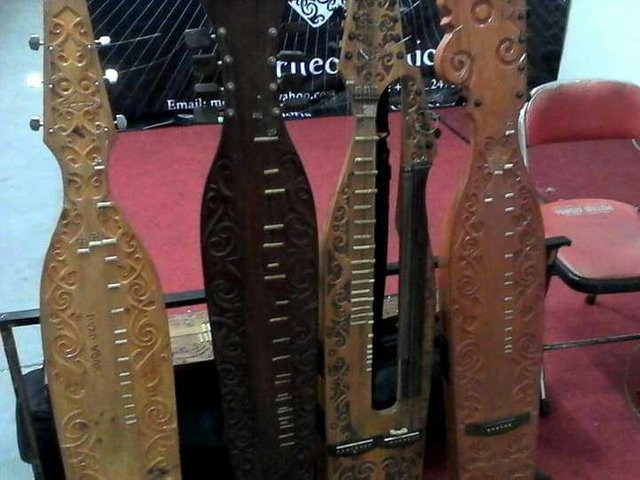
In the previous post I have discussed the Dayak tribe dance, and this time I still discuss about the Dayak tribe as well, but I will discuss about the traditional musical instruments of the Dayak tribe itself.
The Dayak Kayaan tribe has a unique musical art. This tribe has a musical instrument called sampek or Kayaan people call it sape 'kayaan. Sape 'is a stringed music. Sape 'instrument owned by Dayak Kayaan is wide-bodied, small-stemmed, about one meter long, has two strings / rope of plastic material. This type of sape has four scales.
How to make sape 'is actually quite complicated. The wood used should also be selected. Besides Pelaik wood (wood cork) or other types of wood clay, can also be hard woods such as jackfruit, belian and other hardwoods. The harder and more vein of the wood, the better sound it produces. The surface is flattened, while the back of the hole is elongated, but does not penetrate the surface. To find a good sound the thickness of the edges and the surface must be the same, so that the sound can vibrate evenly, resulting in a long, loud sound when picked.
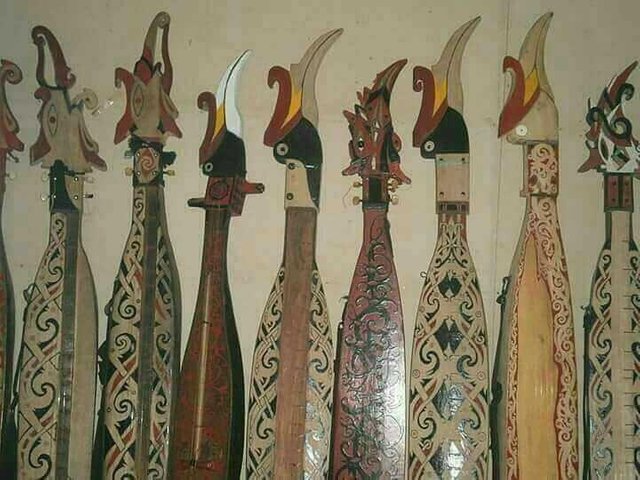
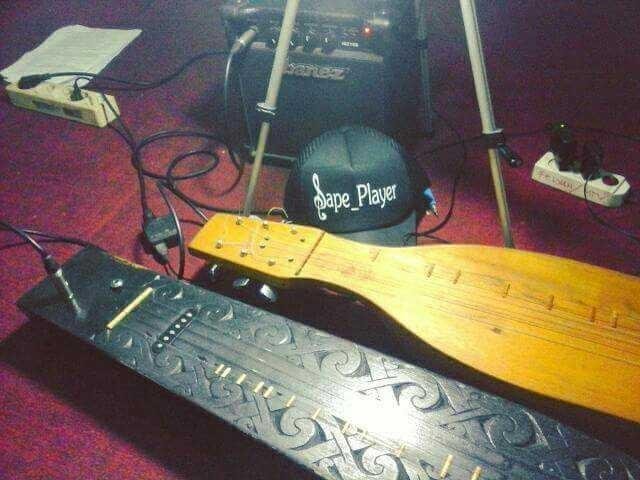
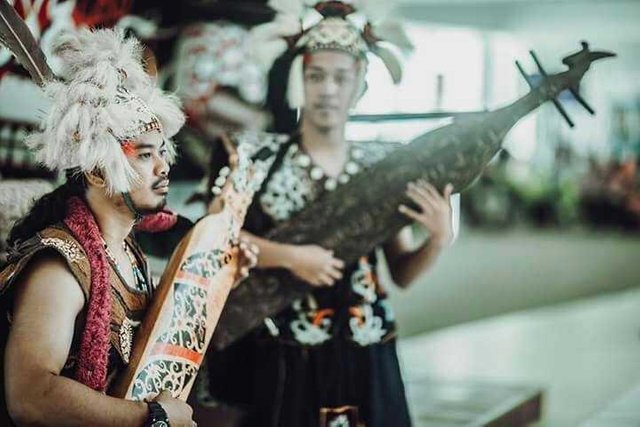
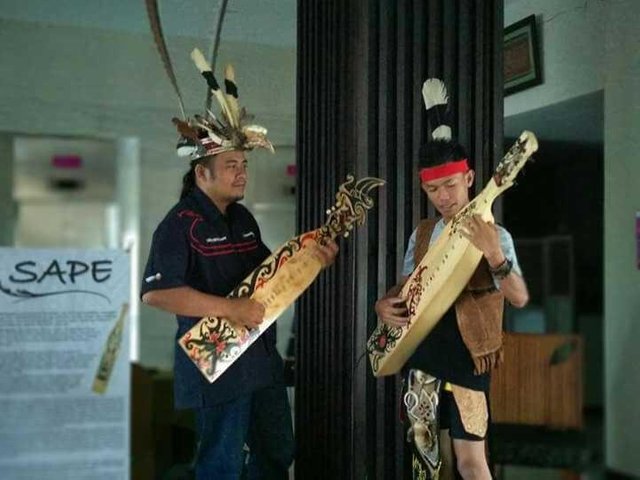
How to play it, in contrast to how to play the guitar melody, because the fingers on only one string are shifted up and down. Usually the musicians when playing a song, just with feelings only.
Sape 'Kayaan is very popular because the rhythm and the sounds it sings can bring the listener in the air. Sape instrument 'is usually played when the party party or padai padai (syit ritual of rice harvest). This music is played by at least one person. It could be two or three people. This type of sape music song is diverse, usually in accordance with the type of dance. For example Datun Julut music, then dance also Datun Julut and so forth.
The music is playing the taste process. Excerpts of clanges present a clink that breaks the silence. Dayaks have a high sense of music. The traditional three-string music has flavored.
Not far from the stairs Betang. A middle-aged man holds a traditional Dayak musical instrument: sape or sampe. Dayak typical clothes adorn her body. He then plays a three-string guitar he holds.
"We play with taste. Because sape is not the same as most guitars. No ladder. Not everyone can play this instrument, "said Stepanus, a sape player from Malino district, East Kalimantan province.
Sujarni Alloy, Dayakologi Institute researcher reveals, sape is a mythology in Dayak society. The diversity of ethnic groups, increasingly increasing the characteristic of art and musical culture. He called the Dayak Kayaan and Kenyah who have a quirk of music with three strings.
Dayak Kayaan inhabiting Borneo, both in the Mendalam River, Kapuas Hulu District, West Kalimantan, Mahakam River, Kayaan River and surrounding areas in East Kalimantan and Baram River, Telaang Usaan, Tubau and surrounding Serawak-Malaysia, have unique musical arts.
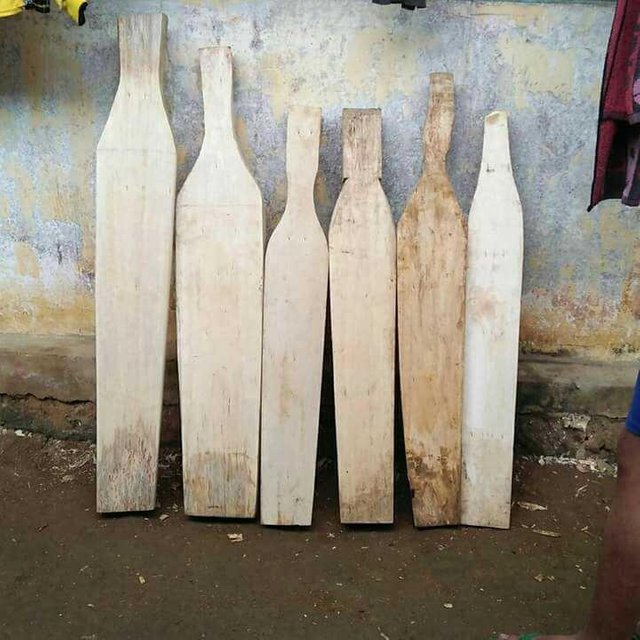
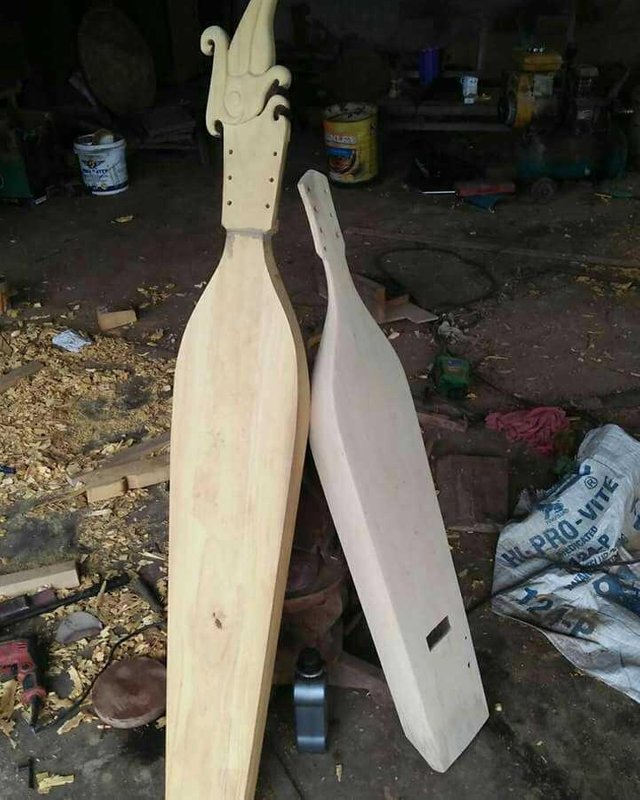
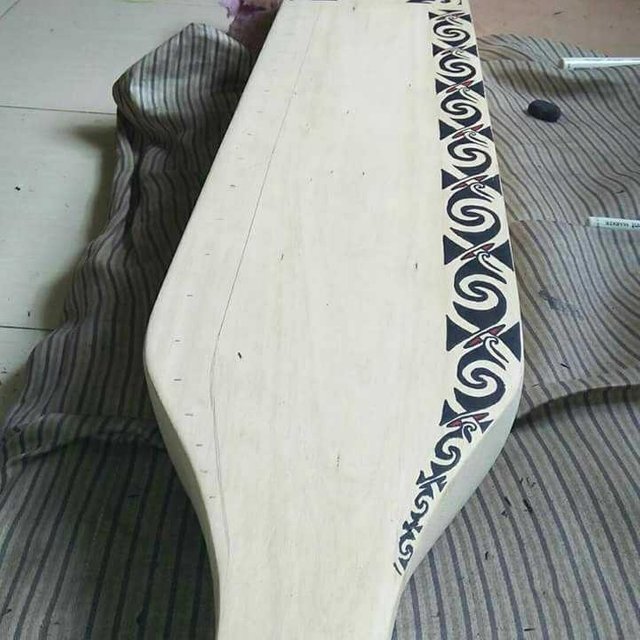
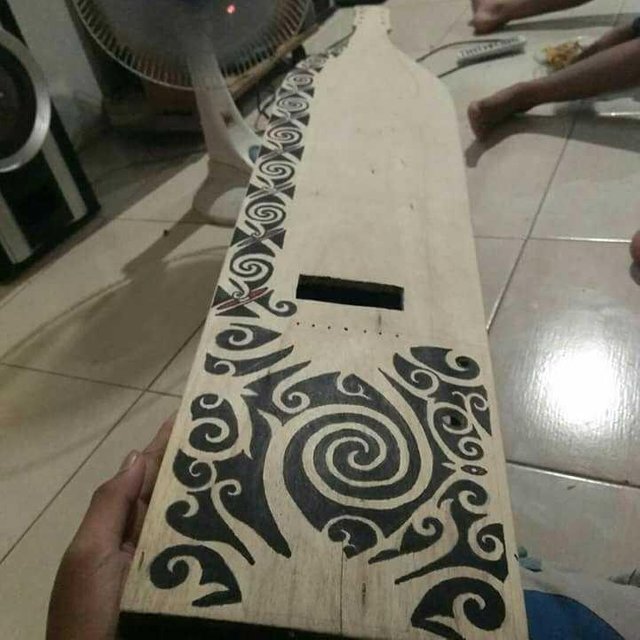
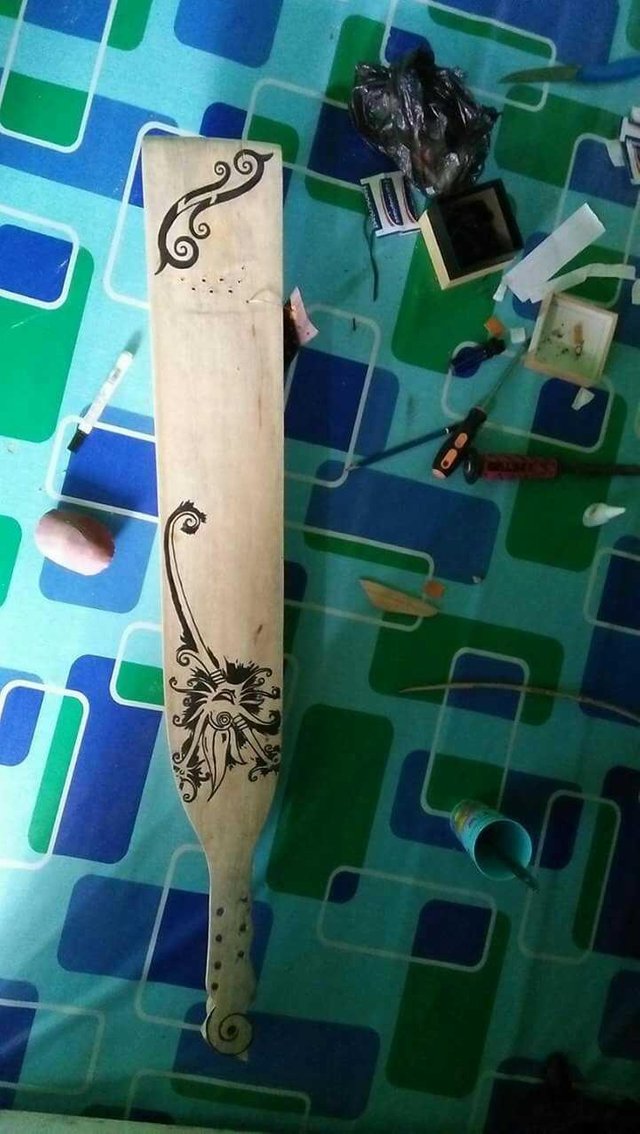
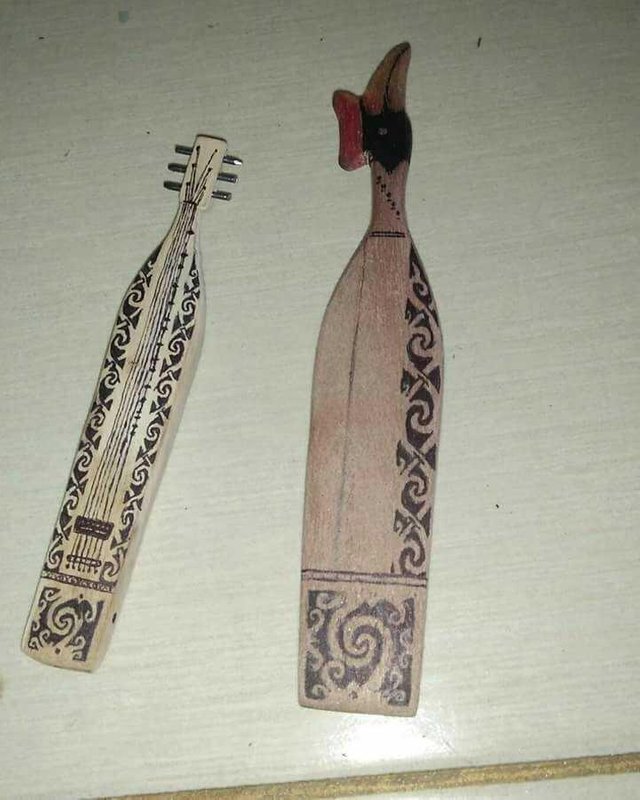
The tribe is quite large. In the group there are various sub Kayaan, among others Punan, Kenyah and Kayaan own. The tribe has a musical instrument called sampek (the Kayaan people call it Sape '). Sape 'is a string music that is familiar to the artists in both Indonesia and Sarawak-Malaysia.
Sape 'music owned by Dayak Kayaan consists of two types. First, a wide body, small stem, about one meter long, has two strings / straps of plastic material. This type of sape has four scales. "People often refer to it as sape Kayaan, because it is met by Kayaan people," Alloy said.
While the other is elongated. At the end of a small shape with a length of about 1.5 meters. People call it sape 'Kenyah, because they are met by Kenyah. Sape 'has 11-12 scales. The rope of the strings of the guitar or other subtle string, three to five strands.
Of these two types of sape, the most popular is Sape 'Kenyah. Because the rhythm and the sound that he sang can bring the listener in the clouds. No wonder in ancient times, when the night came, the young men played it slowly both on the street and along the long courtyard of the house, so that the owner of the house fell sound asleep because of enjoying it.
With the uniqueness of his voice, purportedly according to the mythology of Dayak Kayaan, Sape 'Kenyah, was created by a stranded in the composition (small island in the middle of the river) because the boat sank in a cascade. When that person until now has not known who exactly, along with his colleagues down the river, is estimated in East Kalimantan.
Since they were not able to save the canoe from the cascade, they were consequently shipwrecked. Of the many people, one of them lives and saves himself. While others died from drowning and brought the current.
As he fell asleep, between conscious and unconscious, he heard the sound of the beautiful music of the bottom of the river. The longer he heard the voice, the closer it felt the distance from the music source that made him curious.
It seems that he got inspiration from the ancestors of his ancestors. Back home, he tried to make the instrument and play it according to the lyrics of what he heard when in the essay. From then on Sape 'Kenyah began to be played and became the music of the Dayak Kenyah tribe, to the other Kayaan groups. Now Sape "Kenyah is not a foreign instrument anymore.
When the folk party or padai gala (ritual gratitude of the rice harvest) in this tribe, sape often played. The visitors are served with a graceful dance. Accentory horsehair feathers and cradles on the head and hands and beautiful beads large and small on custom clothing and necklaces at the neck accompanied by sape 'music.
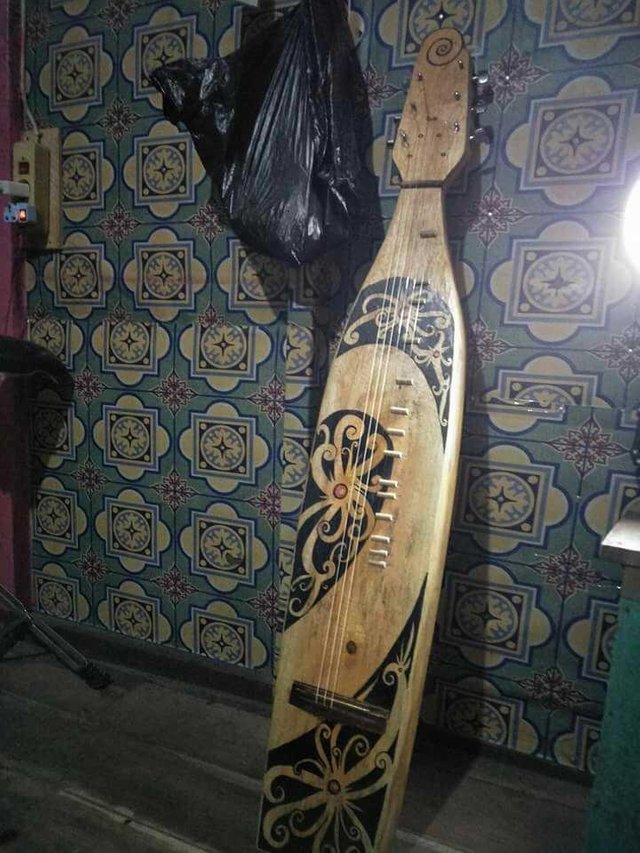
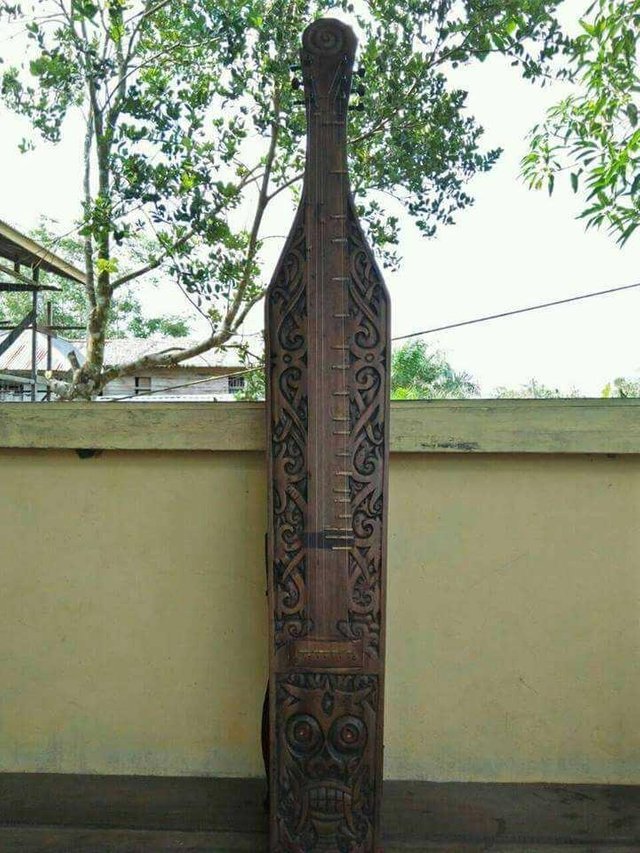
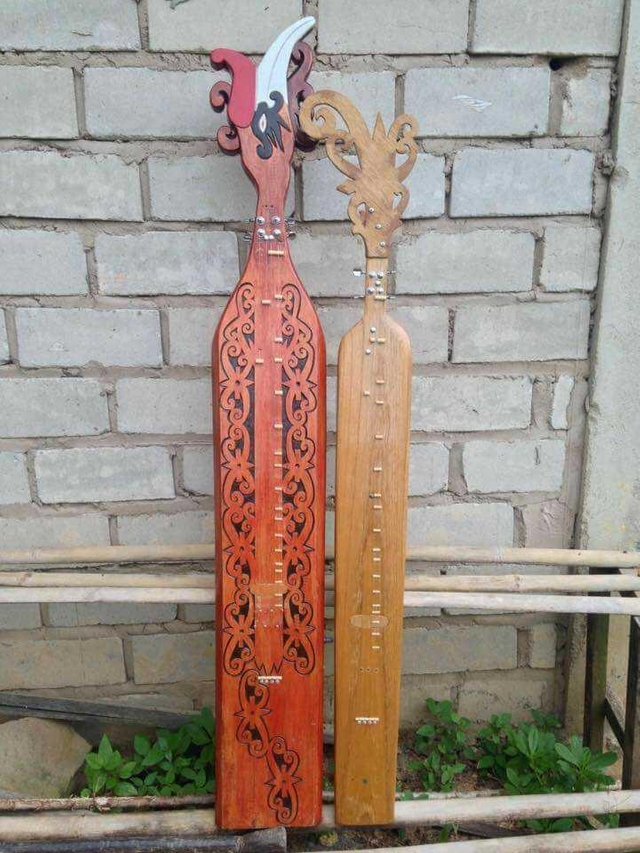
This music is played by at least one person. It could be two or three people, so the sound is more beautiful. This type of sape music song is diverse, usually in accordance with the type of dance. For example Datun Julut music, then dance also Datun Julut and so forth.
There are several types of sape music songs, including: Apo Lagaan, Isaak Pako 'Uma' Jalaan, Uma 'Timai, Tubun Situn, Tingaang Lawat and Tinggaang Mate. The names of the songs are all in Kayaan and Kenyah.
According to V. Aem Jo Lirung Anya, a sape musician from Dayak Kayaan Sungai Mendalam, Kapuas Hulu District, West Kalimantan, it is not uncommon for sape makers to always determine the quality of their voice.
While how to play it, clearly different from how to play the guitar melody, because the fingers of only one on the same string shifted up and down. The musicians when playing a song, just by feeling or feeling alone.
For the moment there is no specific guide that writes about the music song notation. Sape Music Recording 'can be in can like Sarawak, West Kalimantan and East Kalimantan, in the form of cassette tape recorder and Compact Disk.
Currently sape 'not only can be played alone bersaman with other traditional music, but also can dikolaborasikan with modern music such as organ, guitar and even drum as a substitute for the beduk. Currently sape 'can be purchased at craft stores, it's just that most of the sape' is no longer genuine and quality, not even more than a mere display function.
And the sape string is still clinking. Zaman has adopted it to be an inspiration for modern musicians.
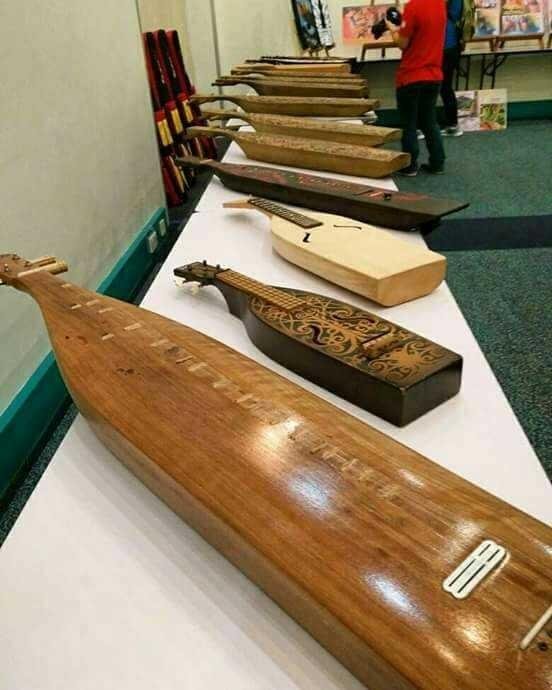


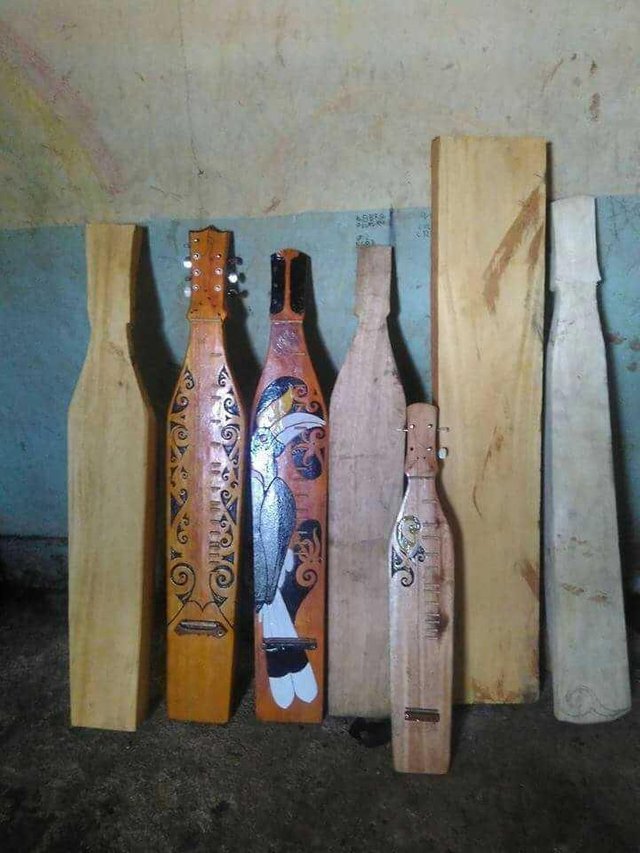
Hopefully this post can be useful and add to our insight. Up here my post today, until meet dipededuli.
Greetings separated from me @arnoldmark, I say thank you very much for your attention all.